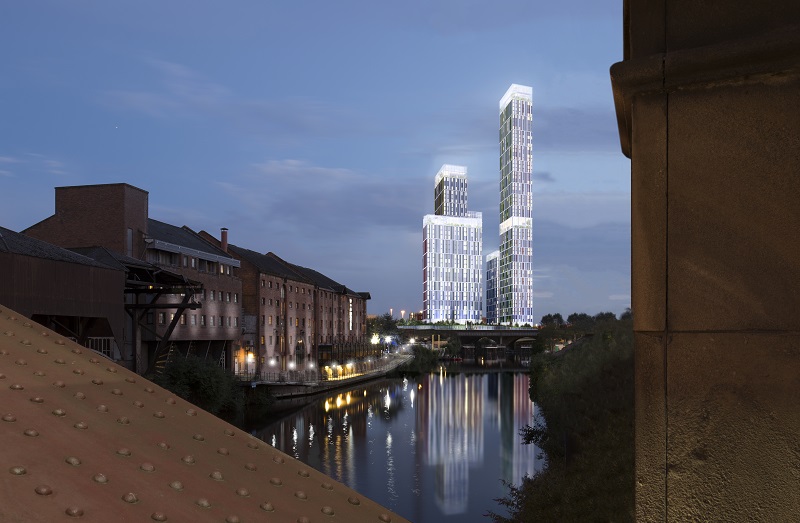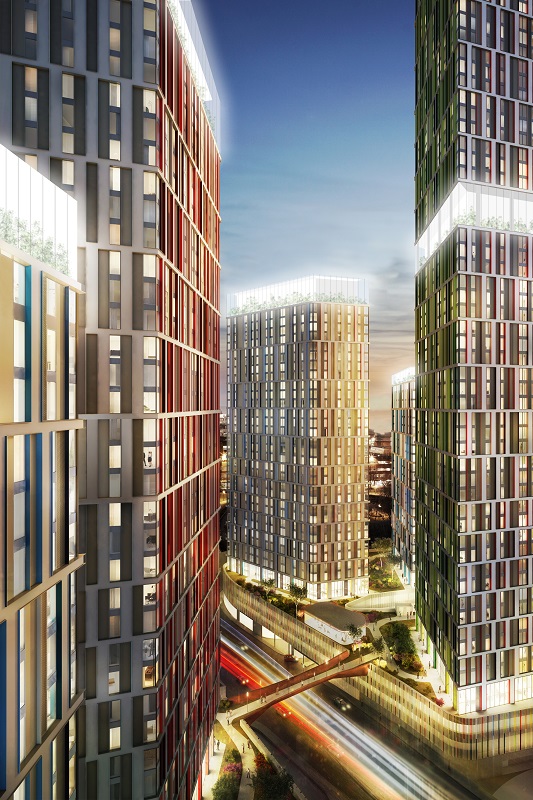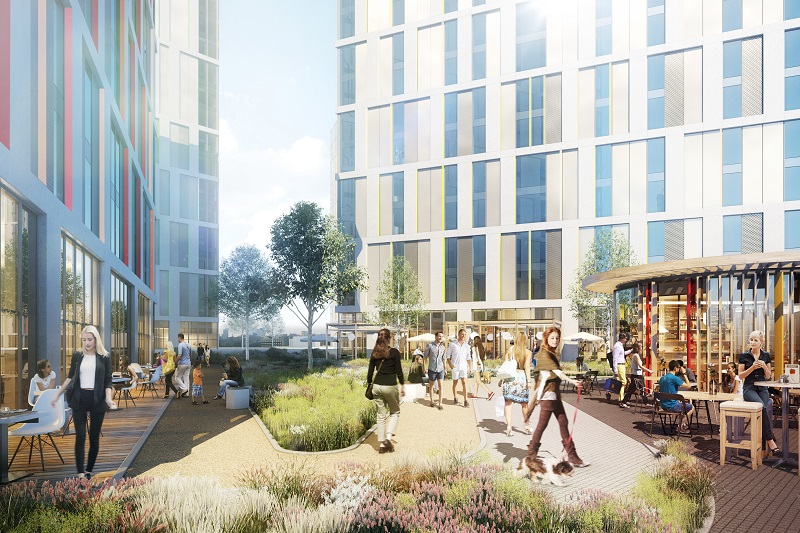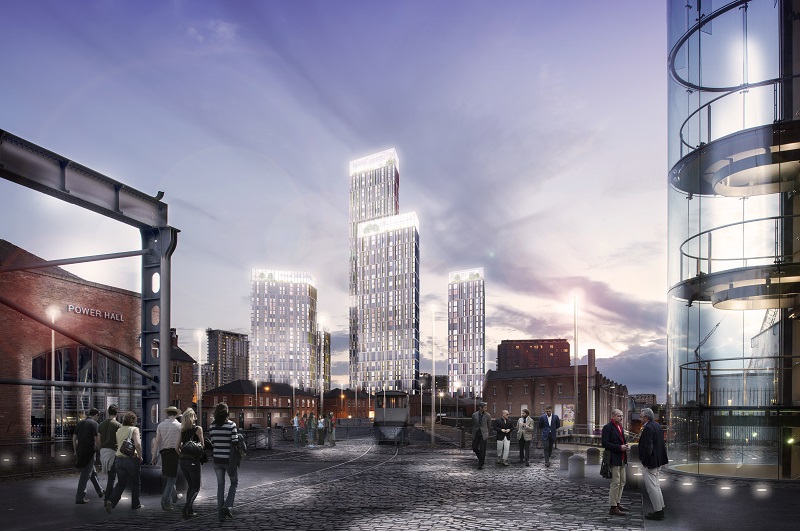Trinity Islands, Manchester
In July 2017, Trinity Islands, touted as ‘Manchester’s first vertical village’, received planning permission from Manchester City Council.
Due to be the tallest residential scheme in North West England, the project was designed by award-winning architects Child Graddon Lewis (CGL). The towers will be 213 m tall, overtaking Beetham Tower which is currently the city's second tallest building at 169 m.
The project is intended to form ‘distinctive riverside communities along the Irwell’; a mixed-use development consisting of 1,400 homes within five towers. Prospective residents will be offered the choice to buy or opt to join private residential communities (PRC).
The towers will include farmer’s markets, retail units and educational facilities forming the core of a city-centre 'village'. It will boast independent bars supporting locally-brewed craft beer, cafes, communities galleries and event spaces, as well as a new boat club with access to the Irwell.
The project seeks to emulate the recent success at Leeds Dock, which was also designed by CGL. However, it has not been without its critics. The plans have been condemned by the Victorian Society, which is concerned that the 'gargantuan scale of the towers…would conflict with the prevailing character and defining aspects of the area.'
James Sidlow, project director at Allied London, said; “Trinity Islands’ appeals to a wide variety of people with its excellent onsite amenity and community-lead retail offering, as well as its sky gardens and lounges that allow residents to relax and unwind. One of the tallest residential schemes in Western Europe, residents will enjoy some of Manchester’s most scenic views”.
Greg Jones, associate director at Child Graddon Lewis, said; “Since our initial appointment, it’s been a real privilege working on the design for Allied London’s visionary new scheme. The aim of Trinity Islands is to provide Manchester with the opportunity to create a world-class neighbourhood and a self-sustaining community of residents and workers. This is a project that goes beyond what’s required and not only creates housing, a well-known priority for the UK, but rather an environment that benefits local communities".
Allied London intend to start construction towards the end of 2017.
For more information, visit www.cgluk.com
Content and images courtesy CGL.
[edit] Related articles on Designing Buildings Wiki
Featured articles and news
RTPI leader to become new CIOB Chief Executive Officer
Dr Victoria Hills MRTPI, FICE to take over after Caroline Gumble’s departure.
Social and affordable housing, a long term plan for delivery
The “Delivering a Decade of Renewal for Social and Affordable Housing” strategy sets out future path.
A change to adoptive architecture
Effects of global weather warming on architectural detailing, material choice and human interaction.
The proposed publicly owned and backed subsidiary of Homes England, to facilitate new homes.
How big is the problem and what can we do to mitigate the effects?
Overheating guidance and tools for building designers
A number of cool guides to help with the heat.
The UK's Modern Industrial Strategy: A 10 year plan
Previous consultation criticism, current key elements and general support with some persisting reservations.
Building Safety Regulator reforms
New roles, new staff and a new fast track service pave the way for a single construction regulator.
Architectural Technologist CPDs and Communications
CIAT CPD… and how you can do it!
Cooling centres and cool spaces
Managing extreme heat in cities by directing the public to places for heat stress relief and water sources.
Winter gardens: A brief history and warm variations
Extending the season with glass in different forms and terms.
Restoring Great Yarmouth's Winter Gardens
Transforming one of the least sustainable constructions imaginable.
Construction Skills Mission Board launch sector drive
Newly formed government and industry collaboration set strategy for recruiting an additional 100,000 construction workers a year.
New Architects Code comes into effect in September 2025
ARB Architects Code of Conduct and Practice available with ongoing consultation regarding guidance.
Welsh Skills Body (Medr) launches ambitious plan
The new skills body brings together funding and regulation of tertiary education and research for the devolved nation.
Paul Gandy FCIOB announced as next CIOB President
Former Tilbury Douglas CEO takes helm.
UK Infrastructure: A 10 Year Strategy. In brief with reactions
With the National Infrastructure and Service Transformation Authority (NISTA).


























